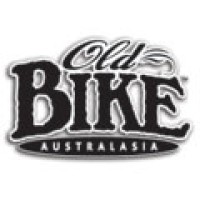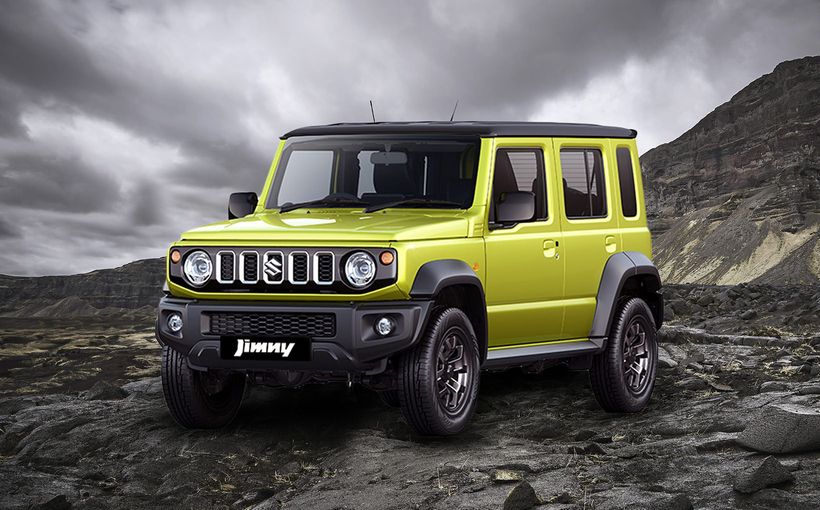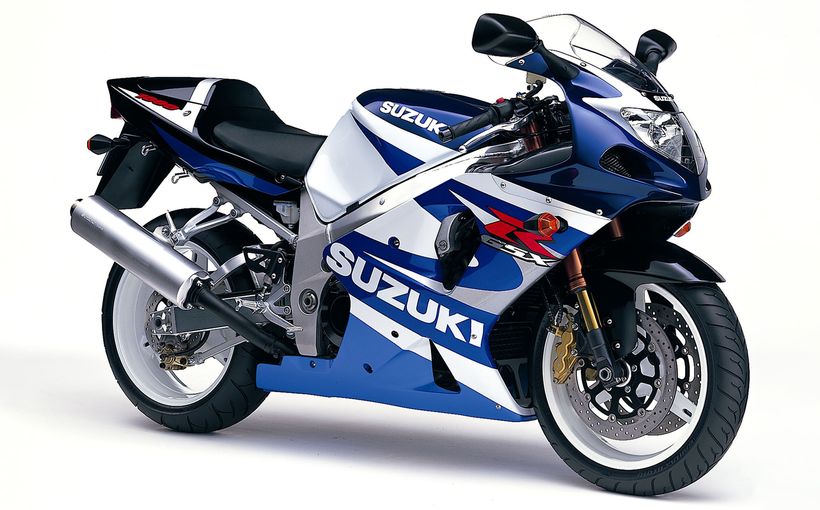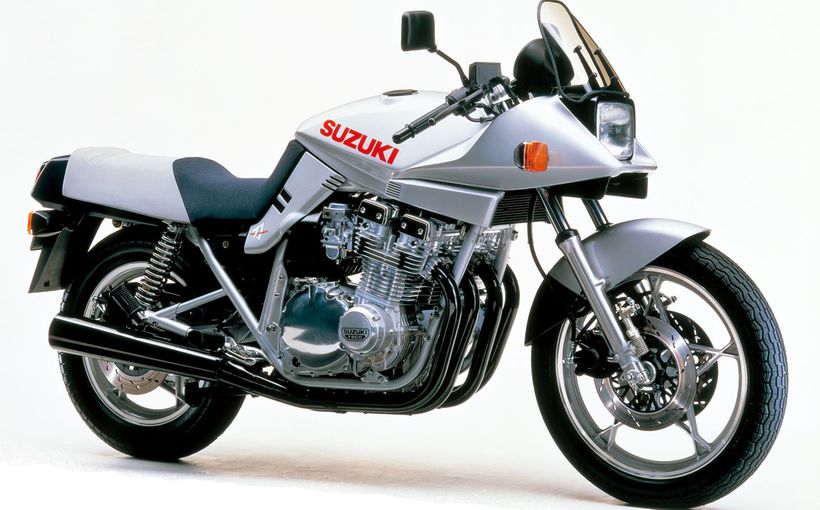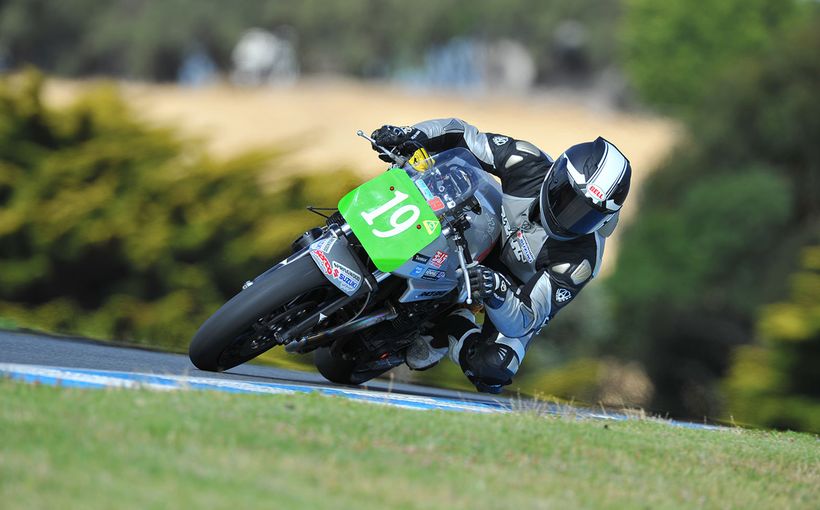
Story and Photos by Jim Scaysbrook
The boom in big-capacity motorcycles than began in the late 1960s continued unabated a decade later, and the annual end-of-year shows, in Milan and Cologne (which rotated year about) and Tokyo always contained a few kite-flying exercises from the major manufacturers. One such was at the 1980 IFMA show in October, when Suzuki pulled the wraps off the most radically-styled machine yet to come out of Japan, a country with its motor industry built and based on conservative thinking and logical progression. There was good reason for this, as the new Suzuki (announced in 1100 cc, 650 cc and 550 cc versions) was not Japanese-inspired at all, but the product of a collaboration between the German Suzuki importer, a fledgling design house based in Bavaria and staffed by three young tyros, and the tacit blessing of the parent company. The company was called Target Design, and what they created was the Katana, the name taken from the curved, singed-edged sword wielded by the Japanese warrior elite; the Samurai.

Target Design consisted of Hans Muth, Hans-Georg Kasten and Jan Felstrsm. Muth and Kasten had previous motorcycling experience, the former having been involved with the ungainly NSU car-engined Munch Mammoth and the R90S BMW, while Kasten had a hand in the design and development of the original K-series in-line four BMW. Prior to their appointment with the Suzuki ED project (ED = European Design), Target had a hand in an extremely radical design exercise applied to an MV Agusta 750, and several key elements, particularly the distinctive front end treatment, were carried over to the Suzuki.
The prototype, called ED-1 and using the 650cc Suzuki motor, was completed in just 12 weeks, and the exercise was warmly greeted by the Japanese brass (notably Group President Osamu Suzuki), who authorised immediate development with a view to production. With this consideration, practical thinking had to be combined with the desire to maintain the cutting-edge styling, along with the need to incorporate many existing components from the GSX750 and GSX1100. These included the complete engine unit and the frame, along with some electrical fittings. The deadline for the completion of the second, 1100 cc prototype (ED-2), was set for the IFMA Cologne Show, and there was not a moment to spare. But Target made the date, displaying both models together and absolutely stealing the show. Still, similar gob-smacking mock-ups had done the same thing before, and the sceptics wrote it off as another publicity stunt that, coming from a company that was currently selling the bland (if effective) GSX models, had no hope of ever seeing production.

Wrong. In record time, the Katana materialised from show bike to showroom. Antipodeans got their first view in the flesh at the Melbourne Motorcycle Show in early 1981 when a black, chain drive 1100 Katana and a silver (with shocking orange seat and brake callipers) shaft-drive 650 were displayed. The 1100 was fitted with standard Suzuki “five star” cast-alloy wheels; 19-inch front and 17-inch rear, and the front forks featured an anti-dive system very similar to that seen on Graeme Crosby’s works GSXR1000 in the recent Swann Insurance International Series. But it was the detail touches that were most intriguing, such as the flush-fitting switches set into the side panels, the left for the choke control and the right supposedly for extra lighting or heated hand grips if required. Then there were the clip-on handlebars, the sculptured, pseudo suede seat with its extra low ride height, black chrome four-into-two exhaust pipes, and the almost retro-styled instrument panel that combined the speedo, tacho and warning lights in a single fascia.

By mid-year, a further model with a 1000 cc engine (along with the 1100 and an all-new 750, the 650, a 550 and even a Katana-ish GSX400) was displayed at the British International Motorcycle Trade Show held in Birmingham. More pre-production machines trickled in throughout the year. In New Zealand, the 1100 Katana was put through comparison tests with a Honda CB1100R and shown to have a superior top speed, thanks to reworked camshafts over the standard GSX1100 and a reputed power output of 111 bhp. A price for the 1100 Katana was even floated - $4,250 plus on-road costs, the 750 was listed at $3,569, and the 650 at $2,999.

There was, theoretically, a line in the sand. September 1st was the cut-off date for homologated entries for the 1981 Castrol Six Hour Race at Amaroo Park on October 18. The rules called for 100 machines to be actually in the country to be eligible, but the date came and went with the initial shipment of 1100 Katanas stranded off Sydney heads because of a tugboat strike. These machines, were in effect, Six Hour specials, being fitted with wire-spoked 18-inch rear and 19-inch front wheels from the Canadian-catalogued model. At the time, 17-inch tyres were out of favour, being high-profile styles with a tendency to flex in the sidewall, the result being heat build-up and rapid tread wear. But it made no difference, as the consignment had still not docked within two weeks of the race, although when it finally did land, a model was rushed to Amaroo and displayed on race day.

Magazine testers queued up for a chance at the new models, which generally received rave reviews, although one journalist described the riding position as “excruciatingly painful… this is a production racer’s bike, not one you can commute or tour on. No way.” All agreed that the 1100 was fast, considerably quicker in acceleration than the GSX1100, partially due to the lower weight (232 kg instead of 244) and also from the increased power – up 13 bhp from the GSX’s 98 bhp, although there was no official explanation for this and little apparent difference inside the engine. There was also much better ground clearance, firmer suspension and precise steering. The big Katana’s spirited performance was not seen as a positive by all, however, one tester commenting, “The Katana is too fast…particularly on unpredictable Australian roads, being used by fellow human beings.” There was also criticism of the lack of storage space for anything other than the meagre tool kit under the seat. The anti-dive front forks also drew mixed response for their harsh action. The front fork problem led to a rash of after-market cures, including progressively wound springs and lighter grade oil.
If the Katana had one distinctive feature from a rider’s point of view, it was that you sat in the bike rather than on it. The seat height is a scant 775 mm. Clip on-style handlebars and footrests set to the rear indicate that the stylist’s brief was to create a machine that looked like it was going fast, even when standing still. And standing still is quite painful on the Katana. You’ll have a stiff neck in no time, and aching wrists even sooner.

The speedo and tacho, crammed into the single instrument casing to reduce overall bulk and to fit in behind the little windscreen, appear to fight each other as the needles move in opposite directions – it’s almost as though they should swap sides, but this would have complicated things as far as cables went.
Over the next twelve months, sales of the Katana in its various configurations were steady, if unspectacular, as the motorcycle industry continued its slow climb from the slump of the late 1970s. But the days of the 1100 mega-proddies were numbered; new regulations meant that the 1982 Castrol Six Hour would be the final fling before the capacity limit dropped to 1000 cc. Despite running first and second for much of the race, Katana 1100-mounted Mal Campbell/Roger Heyes and Neville Hiscock/Rod Gray had to give way to the Hondas at the finish, although Robert Holden/Bob Toomey led the 750 class from flag to flag.
It was the beginning of the end for the Katana concept, although the local-market 750 version continued to sell in big numbers in Japan. The Australian 1000 cc version was seen as a bit old hat compared to the new efforts like the Honda VF750, although Roger Heyes and Robert Holden managed to bring their Katana 1000 home third in the 1983 Castrol Six Hour, on the same lap as the winning Honda. Suzuki turned its attention away from Production Racing and to its new flagship, the GSX1100E, which admittedly, had Katana-esque styling up to a point.
There were further Katana-inspired models with engine sizes from 250 cc to 450 cc, but to the purists, the real Katanas were the 1100 and 750 versions produced from late 1981 to 1983. A few 750 Katanas were brought into Australia between 1985 and 1987, but by then Suzuki’s main sporting focus was on the air/oil-cooled GSX-R750. It is estimated that fewer than 10,000* 1100 Katanas were produced, making the model highly prized today. The model enjoys a cult following worldwide, particularly so, and not unsurprisingly, in Germany, where it all began.
*To celebrate the 70th anniversary of Suzuki, the company remanufactured a batch of 200 of Katana 1100s using the original tooling. The individually-number machines were snapped up immediately. This encouraged the factory to built another 200 one year later.
Protect your Suzuki. Call Shannons Insurance on 13 46 46 to get a quote today.



